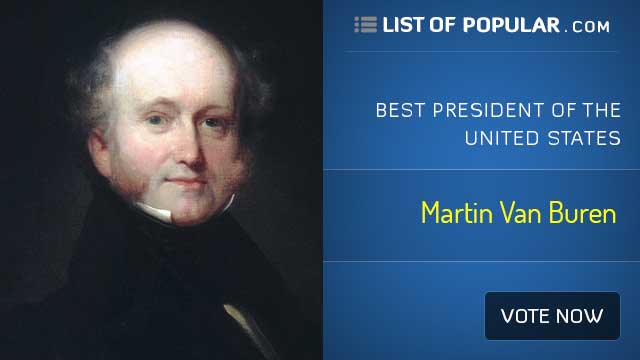The Best US President - Martin Van Buren
Early Life and Political Beginnings
Martin Van Buren, the eighth President of the United States, was born on December 5, 1782, in Kinderhook, New York. Raised in a Dutch-speaking community, Van Buren received a basic education and entered the legal profession. He quickly rose through the ranks of New York politics, aligning himself with the Democratic-Republican Party and becoming involved in state and national politics.
Architect of the Democratic Party
Vice President under Andrew Jackson, Van Buren played a crucial role in shaping the Democratic Party. His political acumen and organizational skills earned him the nickname "The Little Magician." Van Buren's efforts helped solidify the party's identity and contributed to the development of a modern, two-party political system in the United States.
Presidential Election of 1836
Van Buren succeeded Andrew Jackson as the Democratic nominee in the 1836 presidential election. He won the election, becoming the first president born after the American Revolution. However, his presidency faced immediate challenges with the economic downturn known as the Panic of 1837, which had roots in the policies of Jackson's administration and contributed to Van Buren's political difficulties during his term.
The Panic of 1837 and Economic Challenges
One of the defining moments of Van Buren's presidency was the economic crisis known as the Panic of 1837. The collapse of banks and widespread unemployment marked a severe economic depression. Van Buren's response, including his opposition to federally funded relief measures, was criticized, contributing to the challenges he faced in the 1840 election.
Foreign Relations and the Amistad Case
While in office, Van Buren navigated foreign affairs, including the Amistad case. The Amistad was a slave ship where a group of enslaved Africans rebelled and took control. Van Buren's administration faced the challenge of deciding whether the Africans should be considered property or free individuals. The case ultimately reached the U.S. Supreme Court, which ruled in favor of the Africans' freedom.
Presidential Election of 1840 and Defeat
The 1840 presidential election proved challenging for Van Buren. The Whig Party, presenting William Henry Harrison as its candidate, painted Van Buren as out of touch with the economic struggles facing the nation. Harrison's campaign slogan, "Tippecanoe and Tyler Too," appealed to voters, and Van Buren suffered a significant defeat in the election.
Post-Presidential Years and Legacy
After leaving the presidency in 1841, Van Buren sought to regain political influence. He made unsuccessful attempts to secure the Democratic nomination for the presidency in 1844 and 1848. Over time, he became an outspoken opponent of the extension of slavery into new territories, aligning himself with the Free Soil Party, which opposed the expansion of slavery into the western territories.
Death and Historical Assessment
Martin Van Buren passed away on July 24, 1862, at his estate in Kinderhook, New York. While his presidency is often overshadowed by the economic challenges of his time, Van Buren's contributions to the development of the Democratic Party and his impact on the nation's political landscape should not be overlooked. His later stance against the extension of slavery also reflects a commitment to principles of freedom and equality.
Martin Van Buren's legacy is complex, encompassing both successes and challenges. As an architect of the Democratic Party and a key political figure in the Jacksonian era, Van Buren's influence on American politics has left a lasting mark, even if his presidency faced significant economic hardships.

